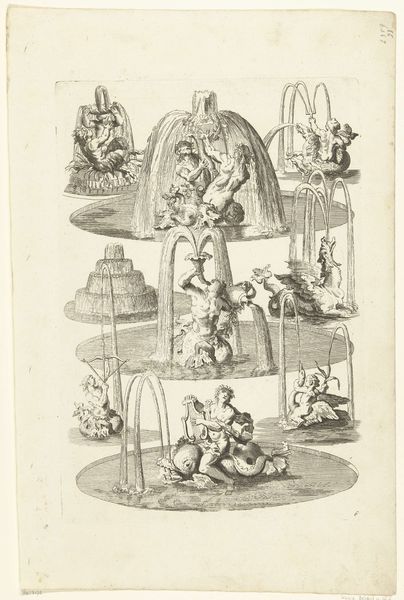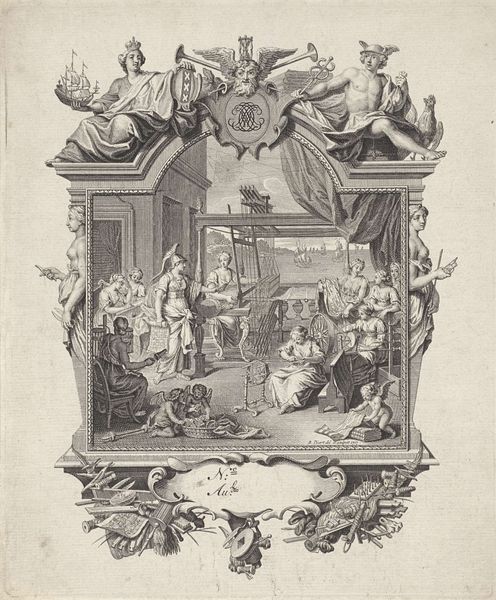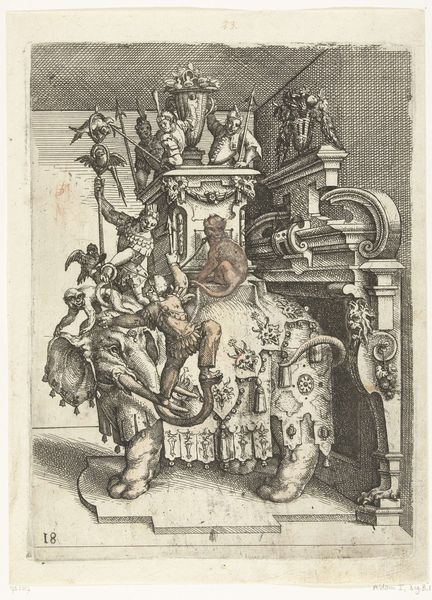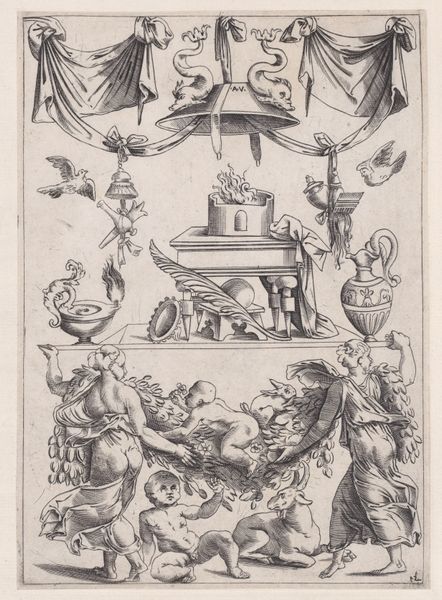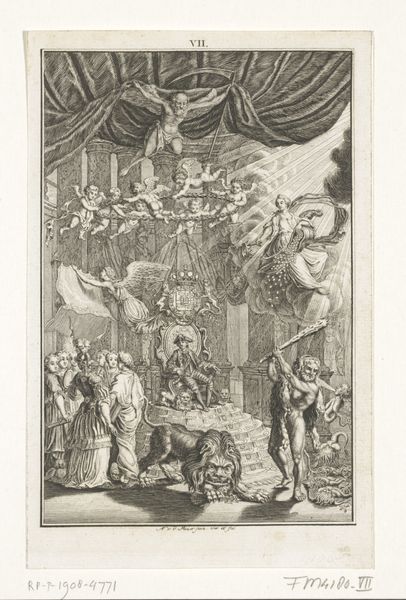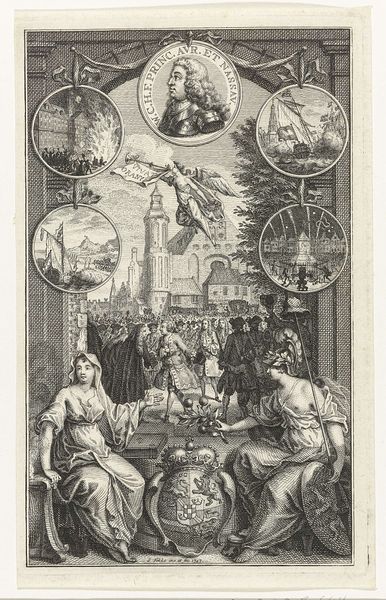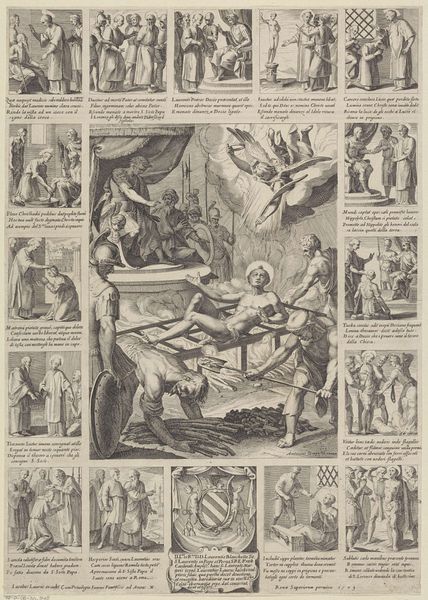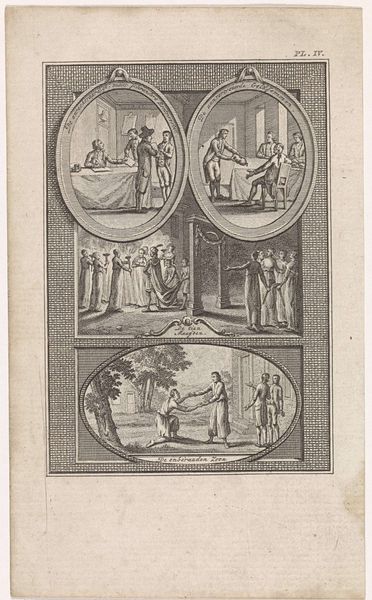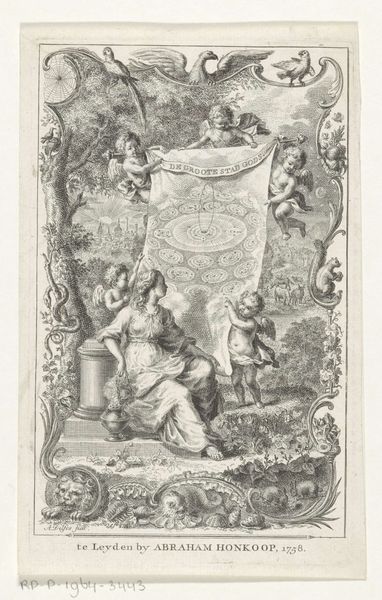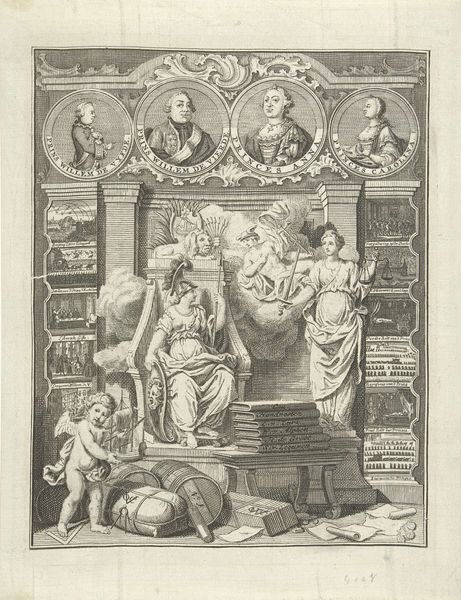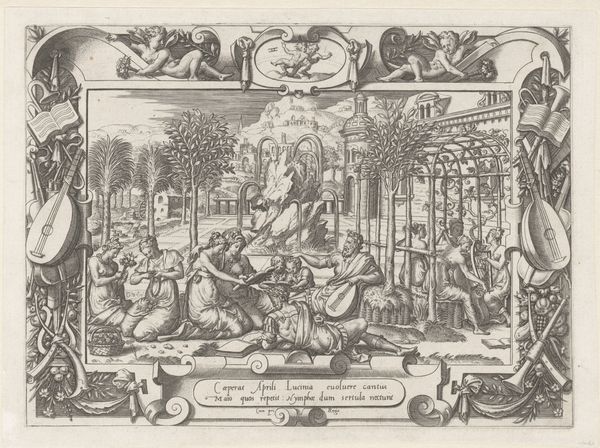
print, engraving
#
baroque
# print
#
landscape
#
figuration
#
engraving
Dimensions: height 271 mm, width 184 mm
Copyright: Rijks Museum: Open Domain
Curator: This print, made around 1712 by Daniël Marot, is titled "Three Large and Six Small Fountains". What are your initial thoughts? Editor: Well, there's something unsettlingly orderly about it. All those creatures trapped in gushing water, organized into tiers… it feels a little...dystopian garden party? Curator: Dystopian is interesting. Fountains throughout history have acted as statements of control and power, especially royal power. The symmetry here, the cascades all meticulously rendered in this engraving, speak to a Baroque desire for mastery over nature. Do the figures say anything to you? Editor: They do. Sea creatures, nymphs... almost universally coded female or feminized male figures. The arrangement, then, looks less like mastery over nature and more like dominance over the traditionally feminine. What cultural connotations might these beings carry, positioned this way? Curator: In Baroque art, these figures are directly linked with classical mythology, acting as intermediaries between the human and the divine, as sources of bounty and blessings. Think of water as a conduit; the figures act as symbolic gatekeepers, channeling natural abundance. The fountains visually represented civic pride and celebrated enlightened rule. It reinforced the idealized status quo. Editor: But that’s precisely what feels discordant. The idea of enlightened rule…while these mythological figures, mostly female, are confined, their power is visually circumscribed. Even though these designs may well reflect existing monumental fountains, translating that into a repeatable, saleable print highlights a paradox – that these displays of abundance rely on restricting powerful feminine archetypes. There's something in its distribution as an artistic item which underscores its relationship with power. Curator: That's a potent perspective. It draws attention to the underlying ideology, doesn't it? Editor: Absolutely. Beyond mere representation, this visual schema propagates a value system. How can we reinterpret what "civic pride" truly meant for those excluded from such idealized power structures? Curator: The brilliance of seeing these images, centuries removed, lies in our capacity to unravel those threads. It seems both artists and social systems are rarely unified monoliths. There's an intrinsic dialogue between control and the appearance of freedom here that you've really elucidated.
Comments
No comments
Be the first to comment and join the conversation on the ultimate creative platform.
